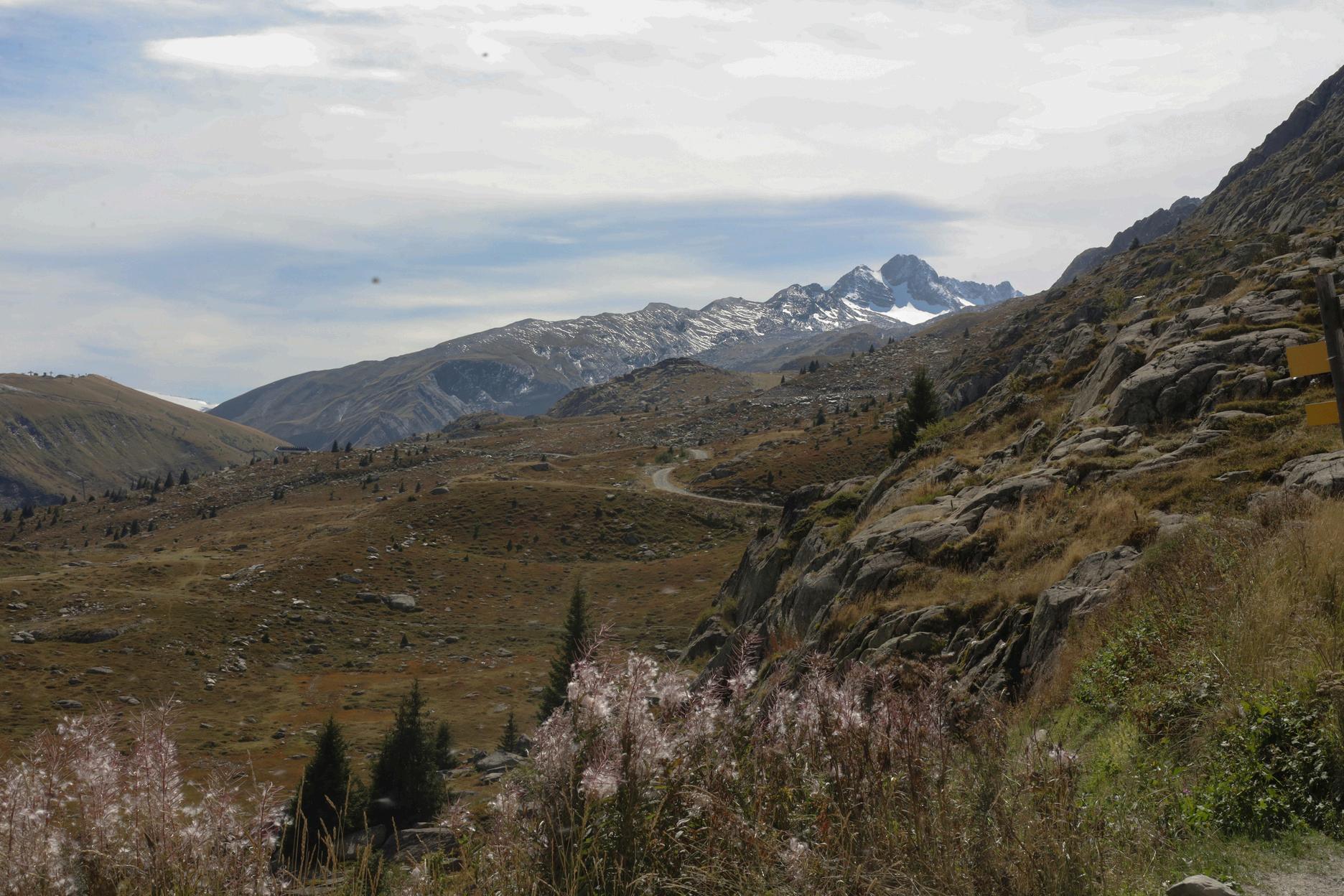C o m e P a i n o r S h i n e v o l . 3 W o r d s a n d P h o t o g r a p h s b y K i r s t y L e e
switching through trees
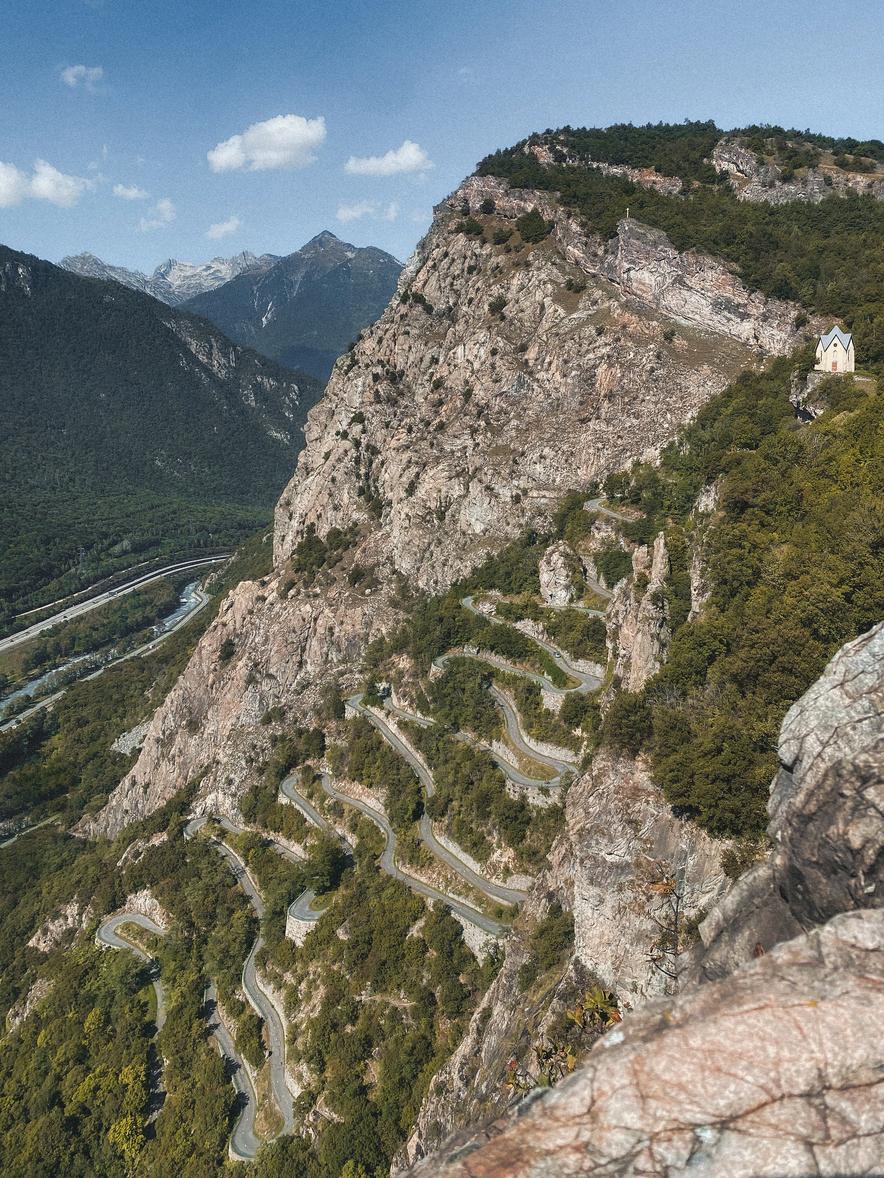
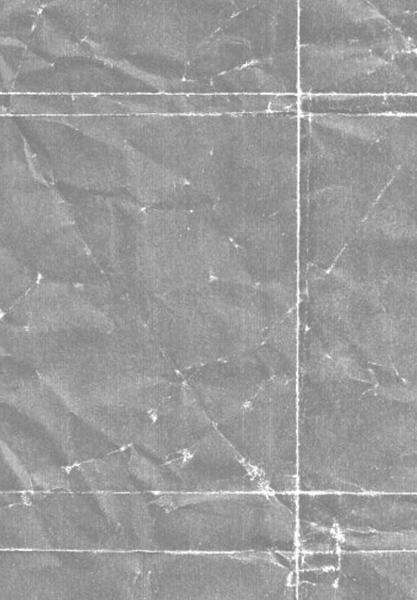
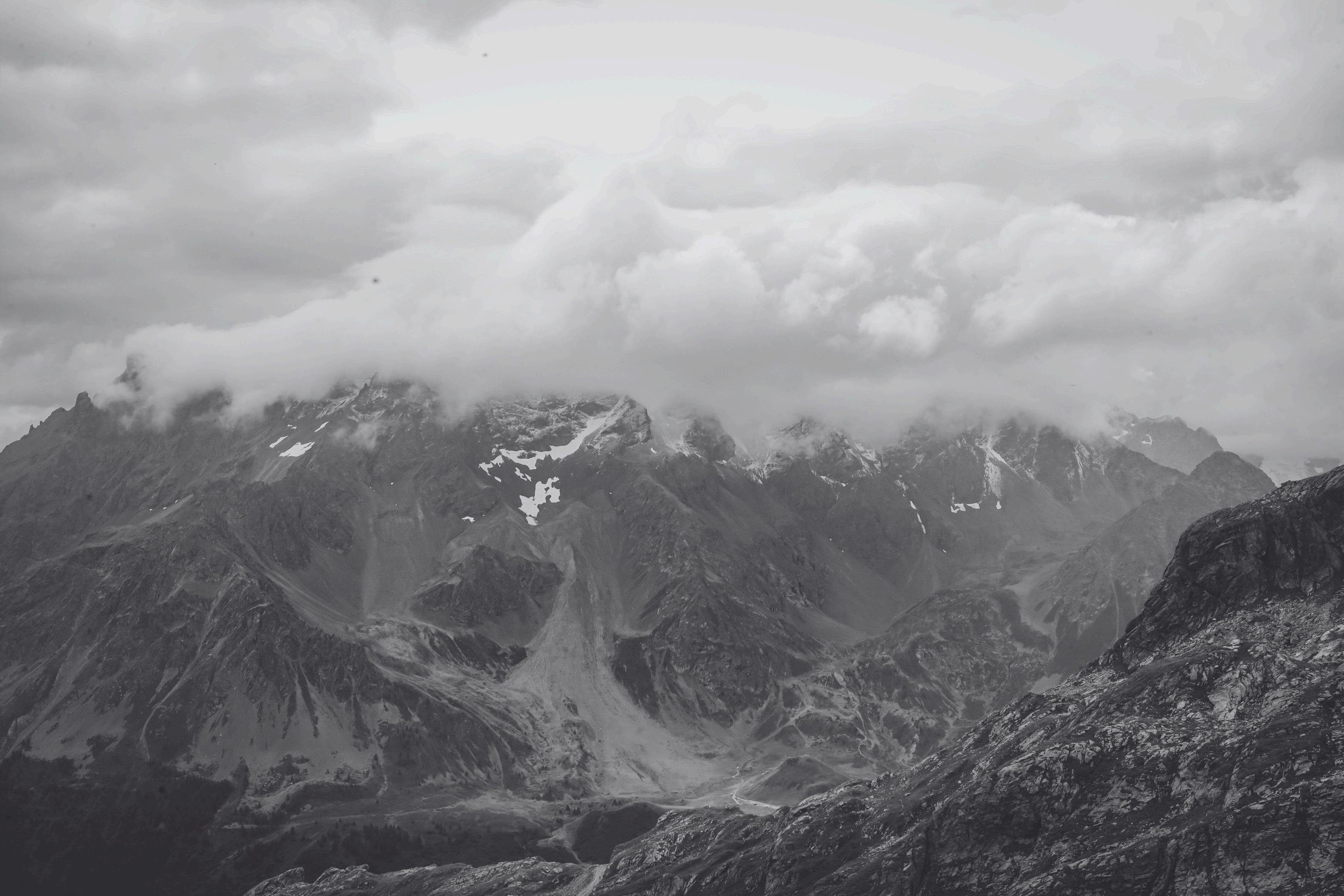
There are moments when I hesitate to share an experience like this, as if sharing it might carve something away. I’ve made many undocumented trips to Europe- journeys without the weight of words and only a handful of blurred images tucked away in an album beneath my bed- too personal to put into print.
However some trips I feel compelled to write, not because they changed me, but because they split me open in some unspoken way, exposing what life looks like when there’s no ego left to guard it. This opening isn’t a shedding, not really. It feels more like a slow unraveling—a quiet falling away of things I didn’t know were holding me together. I return home and reach for them, only to find they’re gone. But perhaps in their absence, something else is offered and I write this zine as an offering to you.
The last time I visited the Alps, I was 22 and alone. I carried a tent through Italy and wandered into the snow, my pockets light and the world heavy with a white silence. I made it into Switzerland and a kind lady offered me a cabin on her grounds, a small refuge where I slept among strangers, other travellers drifting through.
Back then, I was a massage therapist, and I traded my hands for train tickets pressing into the aches of travelers who, like me, were in search of something. I hiked mountains with them and strangers became friends, became stories. In their words, I found pieces of myself, unexpected, like the way a mountain unveils its shape only as you climb and with each story, I grew.

Now I return to the Alps, this time to France, without a tent, but with a bicycle. I’m out of shape for a place like this, the air seems sharper, more certain of itself. On two wheels, I’m not conquering anything but finding my way—letting the mountains reshape me, not with force, but with a quiet persistence. I feel heavy at first, unprepared as my legs burn against the ascents, as if the bike is testing me, asking if I’m ready to know the weight of this landscape.
The peaks rise, indifferent to my arrival. They don’t care how far I’ve come or how long I’ve been away. It is me who must bend, who must let the road pull something from me I didn’t know I was still carrying.
On coming back to the Alps something has settled into me, this knowing that it’s never about how far I go, but about how wide I’m willing to open, how much I’ll let the mountains, the sky, the silence carve into me.
I started at the base of the drops, anchoring the first foothold of a familiar ascent. I began slowly, with a deliberate pace, moulding to the architecture the curves and bends, hoods, and brakes. The spirals formed neat, uniform bands, tracing the contours like a topographic map. The spiral continued upward, and I reached the top. With a final snip, I cut the tape reupholstering the bars of my bike, marking the end of a small but meaningful ceremony.
I stepped back, contemplating the careful work. The smooth, even wraps of tape winding back to the memories of my recent cycling trip, steeped in the mountains the life behind these bars, the captive thoughts, the mountain air, their switchbacks etched in my memory. Now, back on UK soil, in the South East where spines of chalk peter down into the flat, low-lying Thames, it is the memory of those switchbacks that feels like a true coming home.
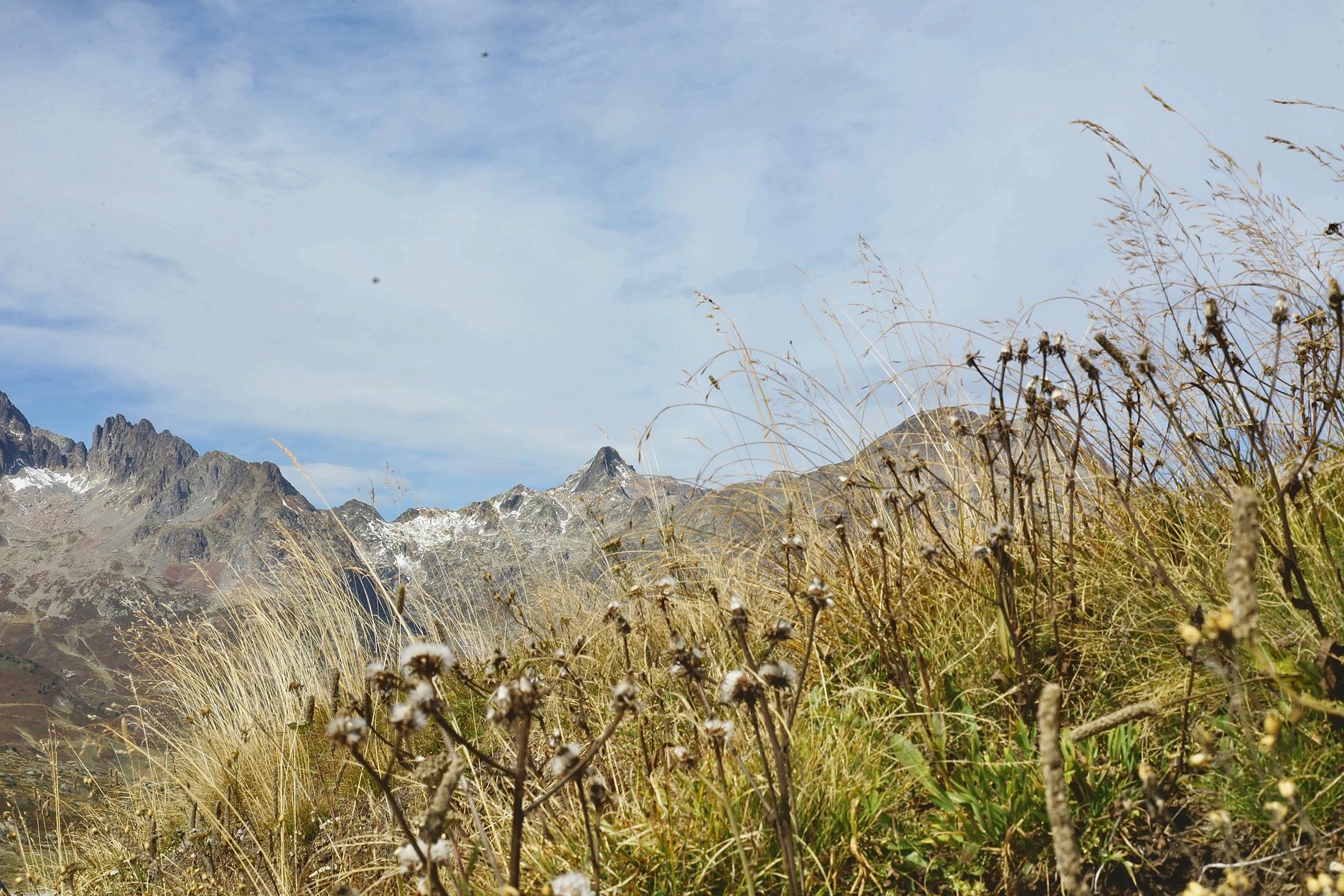

This sense of belonging was felt in the heart of the French Alps, a little town renowned for its cycling physique. If the French Alps were a vessel, Saint-Jean-deMaurienne would be its heart encircled by iconic alpine cols that call out from every direction. Unlike the sharp bursts required to conquer hills in the south of England, here, long, winding climbs stretched out for miles, demanding patience and endurance.
Switchbacks are rare in my usual terrain, and I found myself drawn to their seeming chaos in every ride I planned. The playful, erratic squiggle of lines on the map felt like the doodles of a child with too much energy and not enough paper. There was a defiance in their disorder, a refusal to conform to the neatness of straight lines. As I followed these meandering curves with my finger, they seemed to mock the steepness of the slopes, transforming the formidable climb into a series of almost playful zigzags. But beneath this innocent façade lay a deeper wisdom a recognition that the most direct path is not always the best.
As a novice cyclist, I initially believed the switchbacks would offer a reprieve, making the climb more manageable. I hoped the short straights and sharp turns would alter my perceptions of 'how far,' alleviate my impatience with pain. They promised a
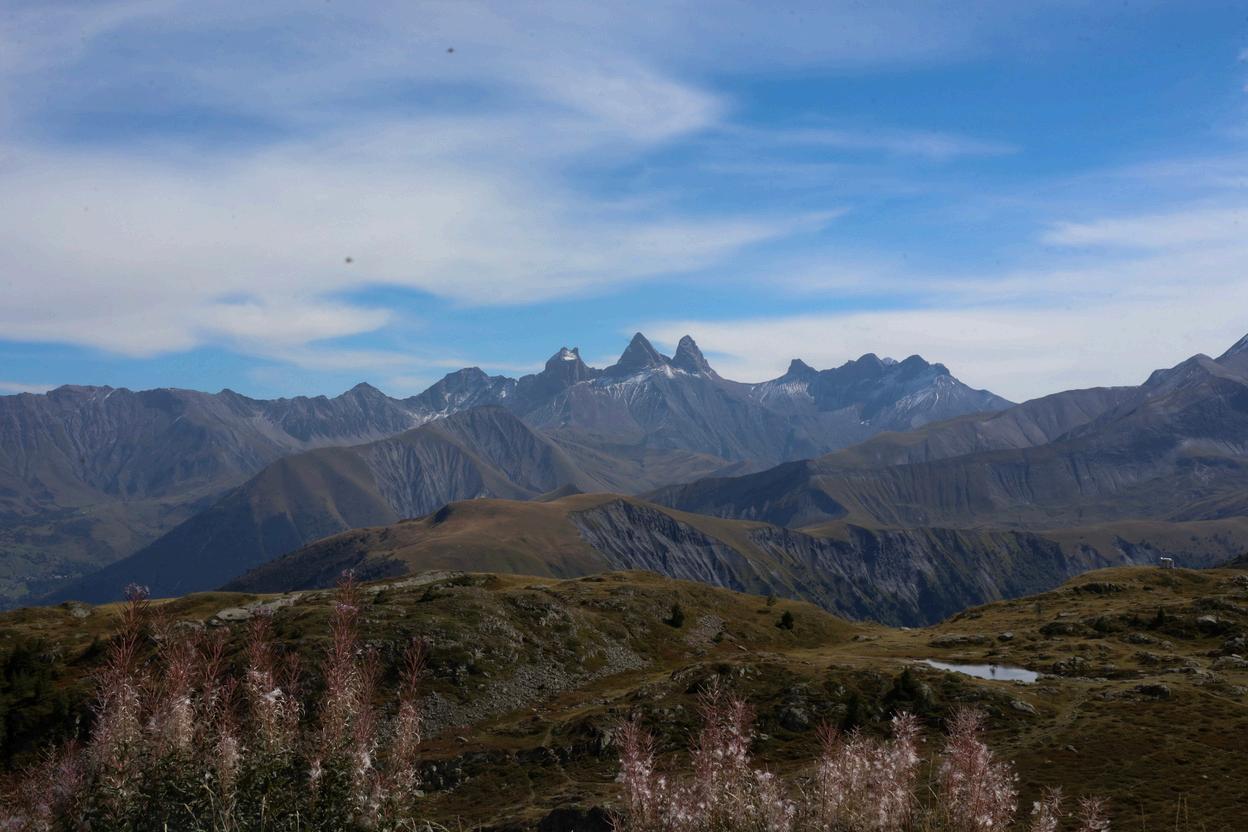
degree of predictability, an illusion of control over the journey ahead. However, as I approached the dense forest before the ascent of the Col de la Confrérie (enroute to the Col du Mollard), I realised I might be wrong. The playful lines I had traced on the map vanished, replaced by the overwhelming presence of the mountain itself.
What I thought would be a series of small victories now looked like an immense, tangled reality, a landscape that refused to be neatly contained within the boundaries of my expectations. For me, this was uncharted territory- not in a literal sense, but in the way it challenged my preconceptions, forcing me to confront the raw reality of the natural world.
Without a map, I was left to navigate using only memory and instinct. The road appeared straightforward, yet as fatigue set in, I found myself questioning whether it was 22 or 27 switchbacks (I later read it was ~45). The constant shifts in orientation complicated my effort to establish a steady rhythm.
As I continued upward, I felt a paranoia set in. I had no idea how long I’d be climbing and I felt the inexorable passage of time slipping away with each unfolding 180 degree curve. I was powerless to bend time to my will, make up for lost time when my pace slowed. I was merely a participant, moving through the unyielding flow, where every moment unfolded under the relentless march of time a continuous force that t b t d lt d
longer wrapping myself around the climb; instead, the climb wrapped itself around me, it enveloped me, its grip feeling like a cage. I fought to find my centre, but the road twisted, and my mind frayed at the edges, straining against each bend and rise.
Losing trust and sense in time spent on the road, I searched for markers anything to reassure me that I was making progress. But there were no signs of elevation. I scoured the earth hoping for alpine flora, yet everything around me remained stubbornly unchanged.
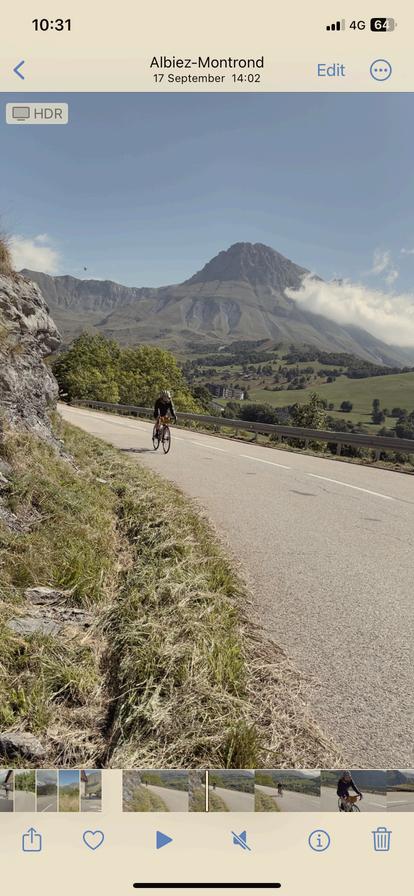
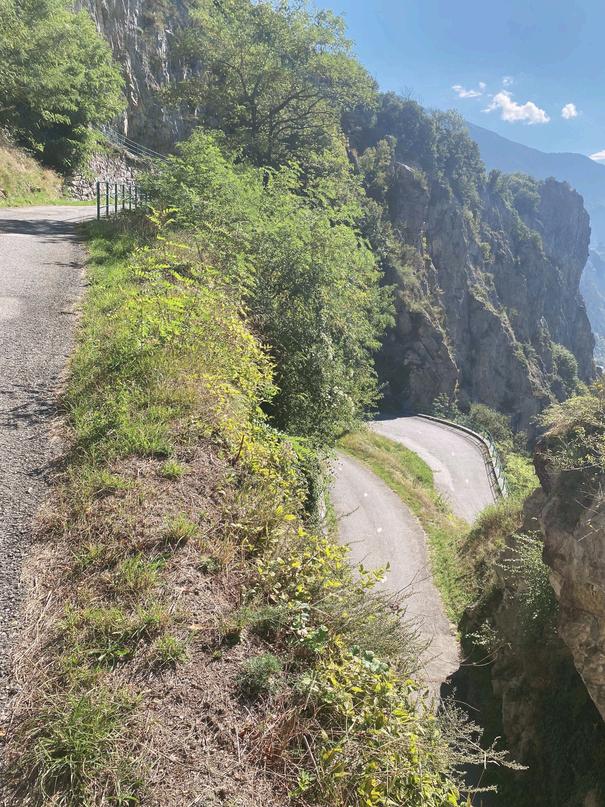
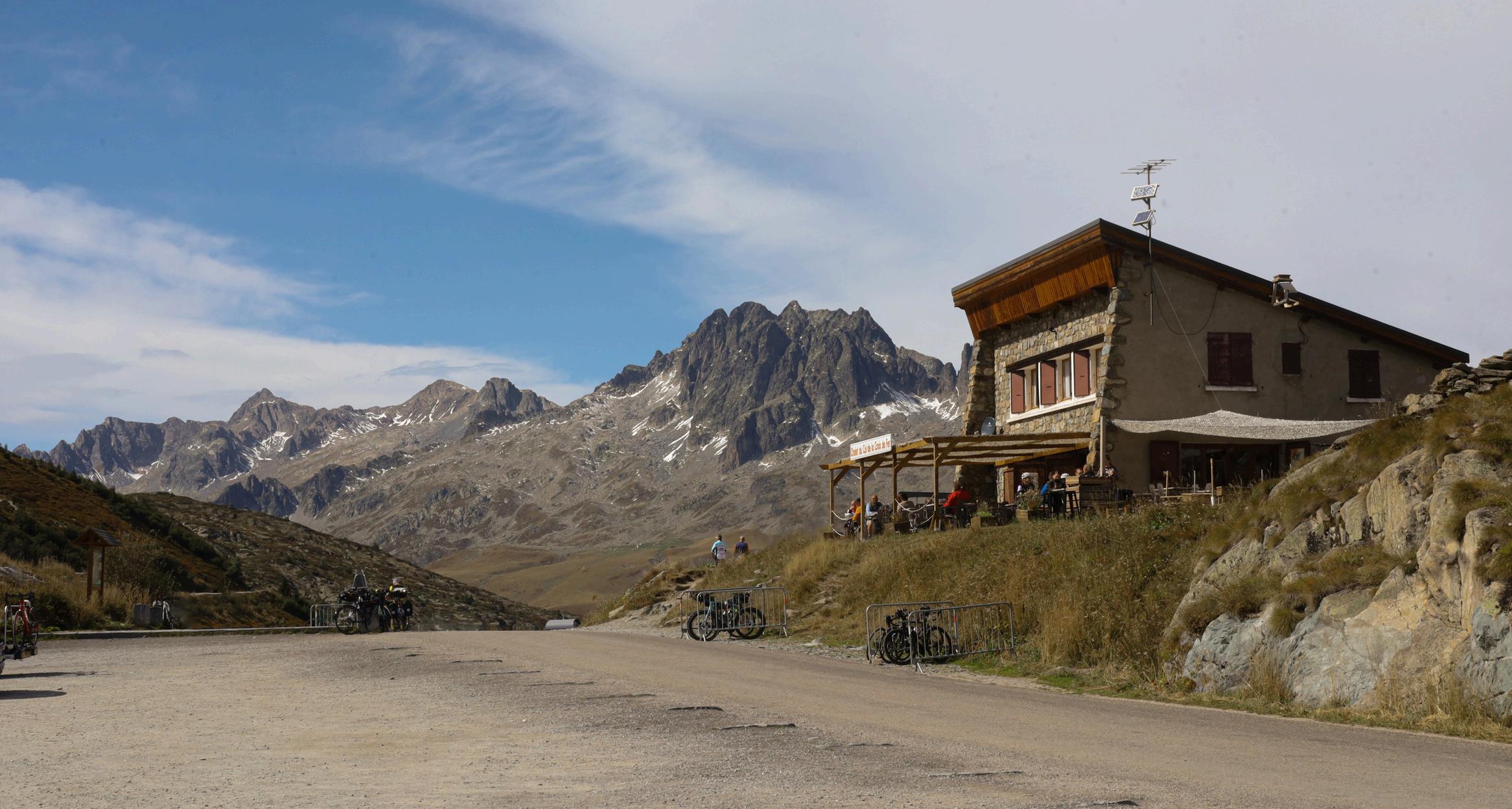

The light filtering through the ff d fl h b
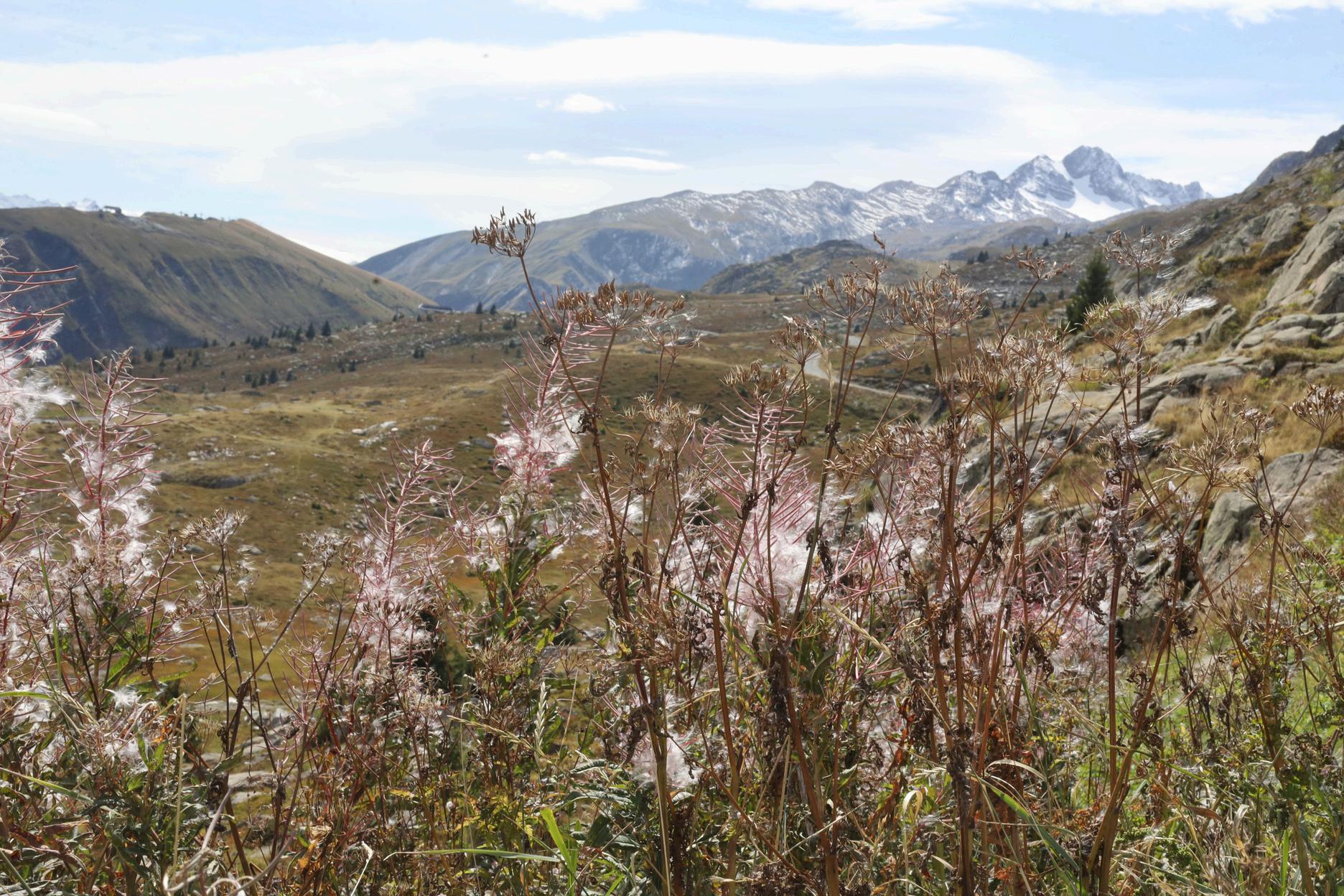
weary in the paradox of the reversing switchbacks.

These words revealed the story of the path I was cycling on, and I realised it was not a story I should follow. These were not messages for me.
With no choice but to acclimatise to the nature of the switchbacks I had a word with myself. I had to put my trust in the process. Feeling like I was riding in reverse, I thought back to the legacy of this climb and the countless riders who had faced it before me. With each revolution I realised that even in this wild, mentally tangled state, every backward moment was part of the upward journey. Progress, I understood, unfolds in these small, repetitive motions each one an incremental gain, a quiet part of something much bigger than myself.
As the switchbacks finally eased and life straightened out, I laughed to myself, recognising my instinct to clutch at anything that offers a glimmer of hope. Open, exposed and vulnerable I was literally grabbing at an air that was thinning with every pedal stroke I took. Reading meaning in road maintenance signals and ancient Tour de France slogans.
There, I realised it wasn’t the chaotic twists and turns that had drawn me in, but the method behind them the relentless persistence that demanded I dig deep to truly open up.
We’re often advised to navigate life along the path of the straight and narrow, to colour entirely within the lines, as if every bend could lead us astray. But these switchbacks moved me in ways the straight path couldn’t teaching me that the hardest routes often require us to bend a turns, in the windin carve out something or just simply reach o

It’s in the slow pull of the climb, that makes the gentle detour feel like a hand softly guiding us back home to ourselves.

In the end, it’s never about the destination, but the quiet return to a self we hadn’t yet known we were searching for. That even the paths that seem like detours ultimately lead us exactly where we need to be.
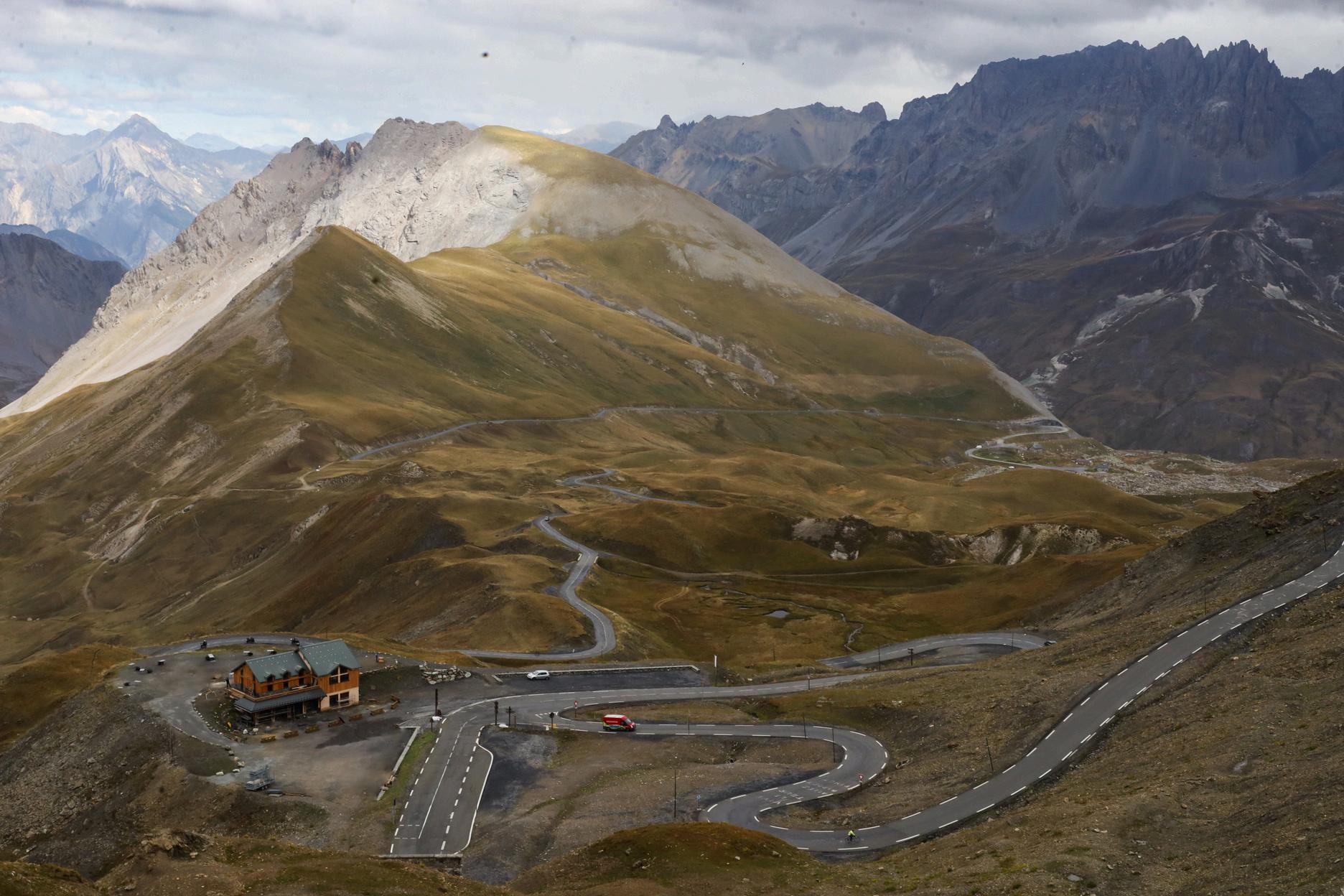

I love the shift in climate when entering a mountain ecosystem. There’s something it does to my body as if I can feel the centuries of time pressing down, the kind of compression that promises to hold me together.
I was cycling in France during the liminal space between seasons. September hung in the air with a promise of change, the month straddling two worlds, but I felt an unwillingness to grasp one, nor to let go of the other. I longed for the warming sun and the waking cold, but I knew the only way I could hold on to the warmth was by laying low, sticking to the foothills. However, I wanted to feel the orographic lift of the cold mountain air. My body wanted the cold, the cold wanted the silence, and the silence was deep.
The mountains always deliver.
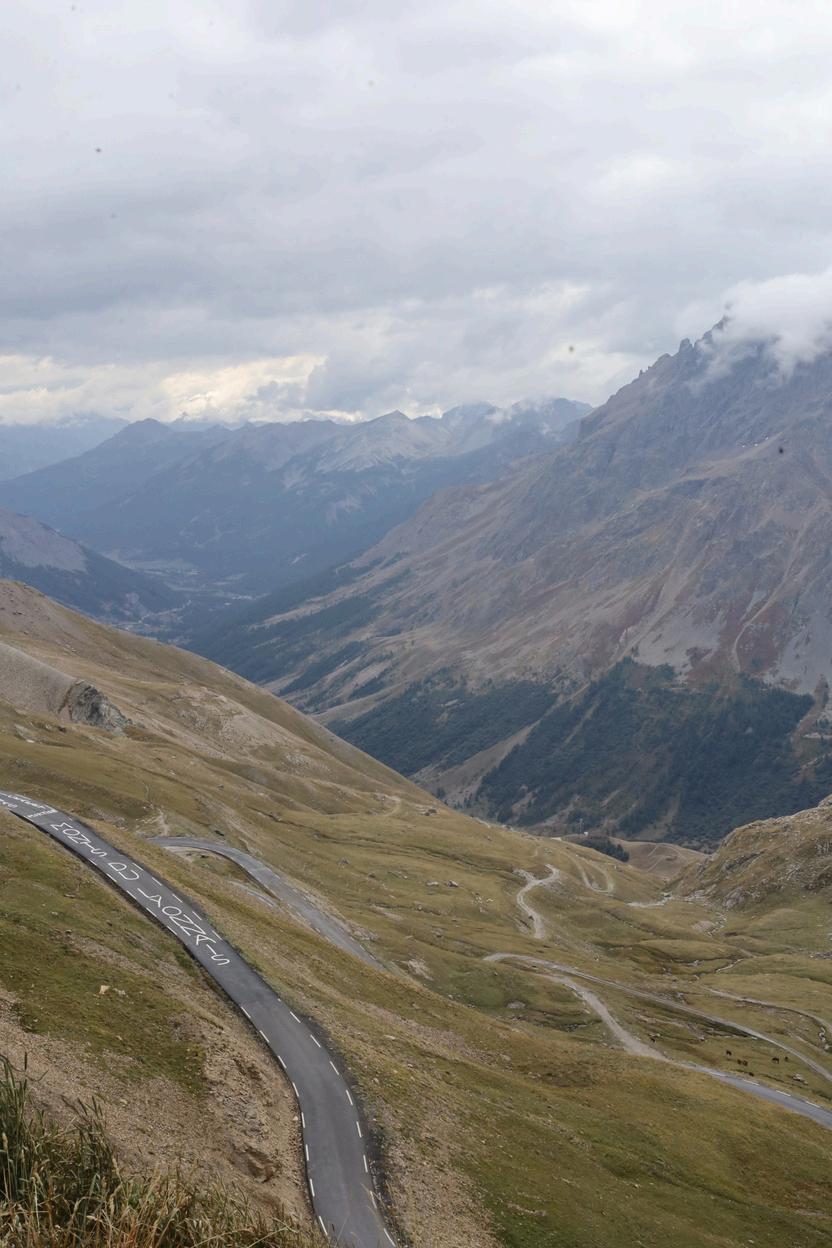
We took the road that winds toward the Col du Galibier, one of the highest mountain passes in Europe. In the distance, the mist clung to the edges of the mountain road. As we left Valloire, the road to the pass became a hallowed valley, holding a space where something warm should have remained from the hundreds of cyclists who had passed through. Life had been here but left no trace.
Within the first 5 km, the temperature dropped, a cold that forced me to confront what I had been avoiding, a rawness that got under my skin. I don’t remember the wind, but I felt a silent force pressing into me, a resistance of cold air that didn’t just cut but hollowed me out. I could feel the pieces of me loosening, a certain scattering of myself in a place that didn’t care if I was present.
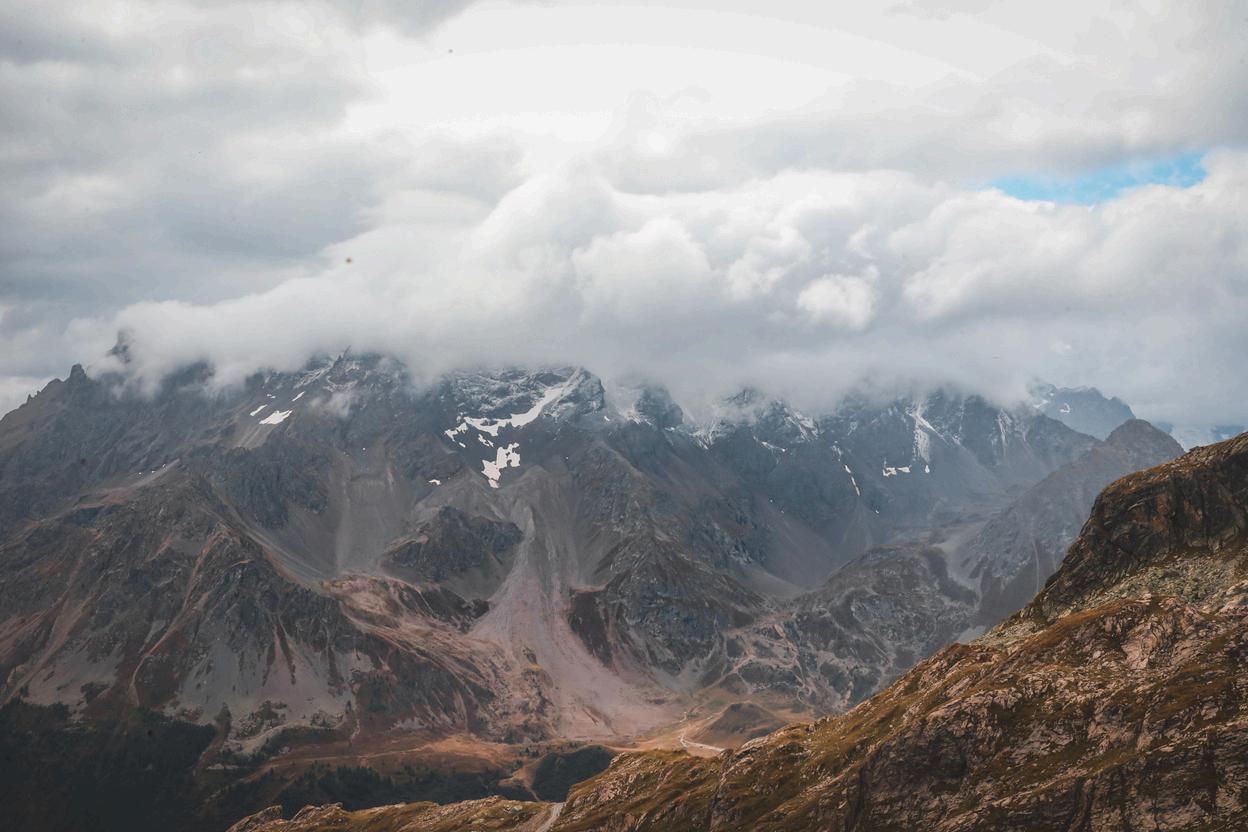
In the cold, breathing felt like a risk, pulling in shards that might break me open. I was borrowing air I couldn’t afford to keep, forging a path that felt both hellish and holy. The road was layered with more than just stone, possessing a depth that swallowed all sound, making time feel slower and heavier.
Each layer the cold peeled back was a part of me, exposed to a new rawness. I was shocked by how easily I felt diminished. The terrain had dipped down into an underworld that felt like a kind of hell, not one delivered with heat, but with emptiness, evoking feelings of self-isolation, an inner abyss unsettling the aspects of my psyche.
As the elevation increased, everything was stripped bare, even the air. There was no warmth left in me, no softness just the sting of existence, open to the elements. Other cyclists, bundled up as if in disguise, descending like avalanches, desperate to escape what they had just fought so hard to hold onto. All the weight that clung to their minds fear, doubt, plague—was shed by the wayside.
The process was mute, and in the final few turns of the road, I heard my heart beating louder, anticipating the peak. At the top, the beauty was so fierce it felt like a warning not of how small I was, but of how fragile I felt in the face of something so completely inhospitable. I stood in my skin, feeling for where life should be, the cold, un-held air stretching out in every direction, the frigid temperatures daring me to stay longer than I should.
Looking out at the Dauphiné Alps, there was something holy—beyond religious boundaries. I wondered what life might be like if I gave in, surrendered to the world’s pressing hands. I felt myself scattering into nothing again, but this nothingness had its own gravity, and sometimes, to hold on is to be bound to that absence, letting the weight of longing overshadow the light of what is yet to come. The mountains, steadfast, refused to release what they had taken, so I rebelled against their gravity and weight, releasing my grip not as a giving in, but as a letting go. It was a choice to reclaim my breath, allowing the scattered pieces of me to slip into a new existence.
This place might be too wild to notice me, but I see it.
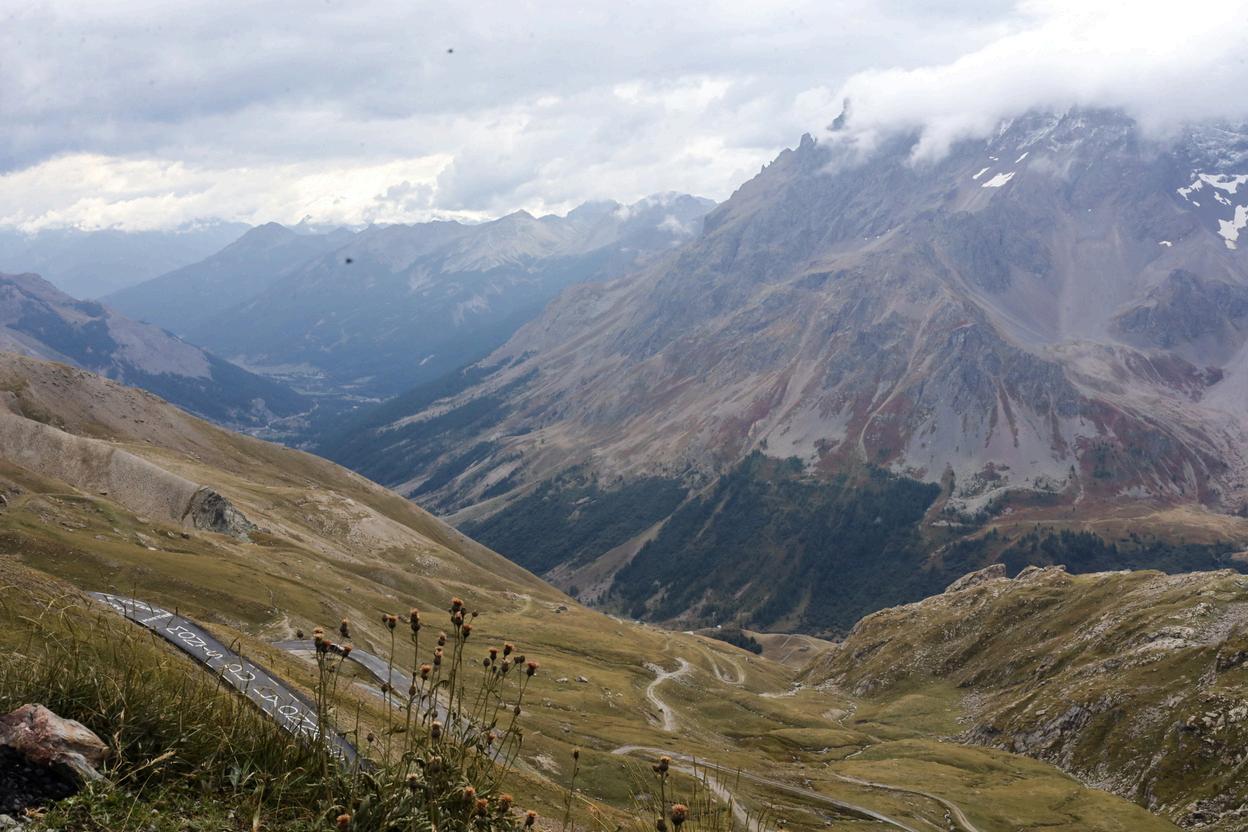
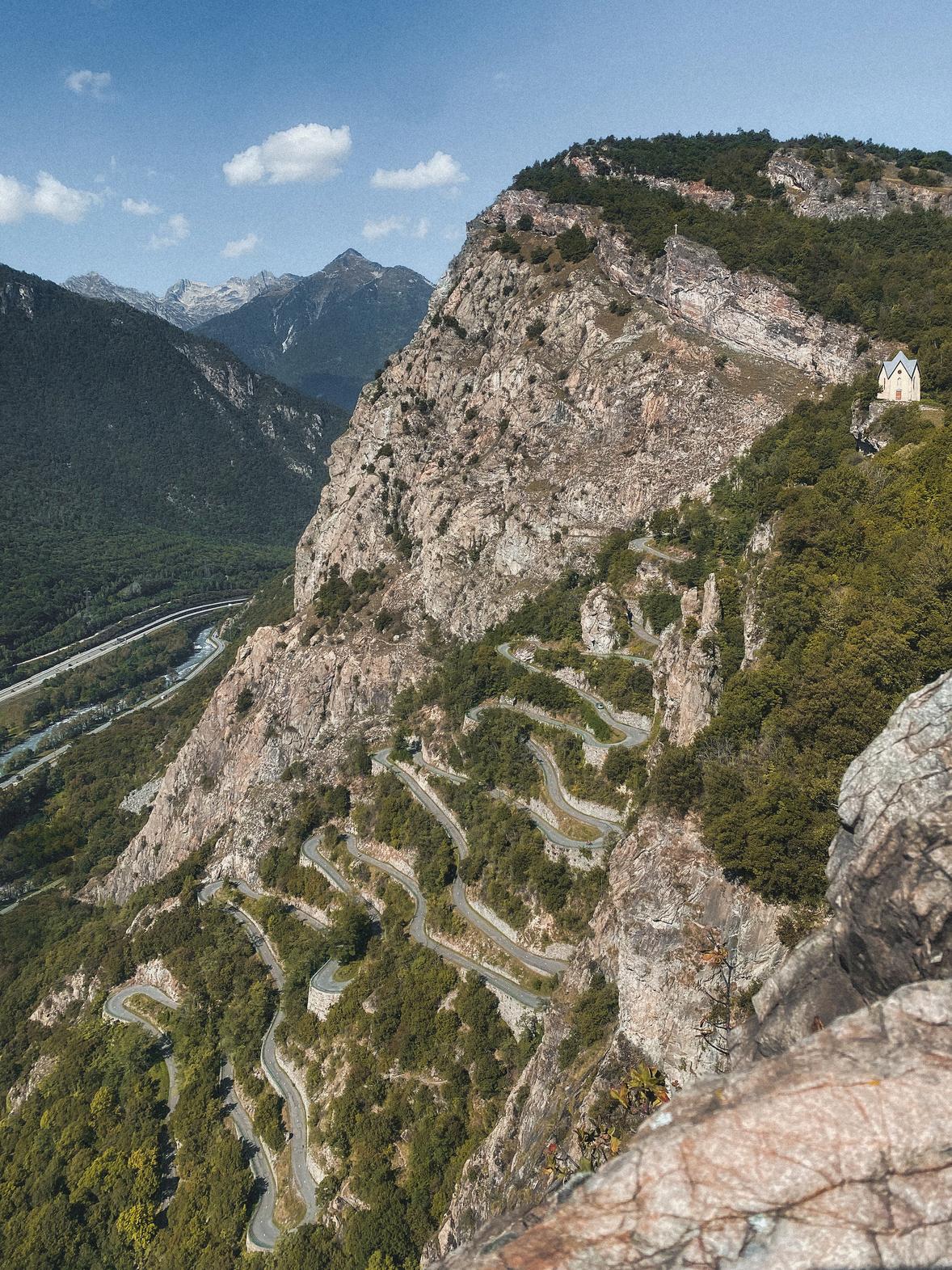
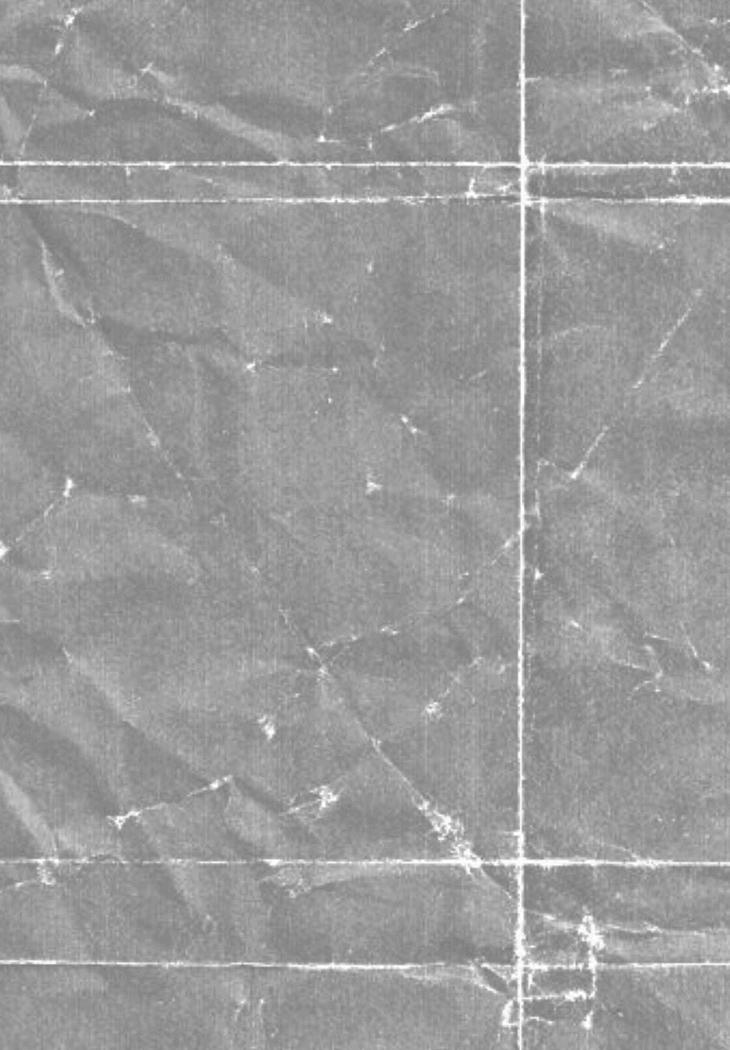
As I navigated these alpine roads, I was reminded that the mountain was not an enemy to be conquered. It is I who bows down, whether I realise it or not, hunkered over the bars.
My mind tries to leave, even as my body stays, following the silent rules the most basic rhythms of existence: keep pedaling, keep breathing. I speak aloud just to see how far the silence stretches before it breaks.
But the world is not a matter of victory or defeat. To claim I’ve conquered a climb is to say I have subdued the sea—impossible, for the mountain remains unchanged, unmoved by my struggle, eternal in its dominance.
As if nature ever bowed to my ambitions.
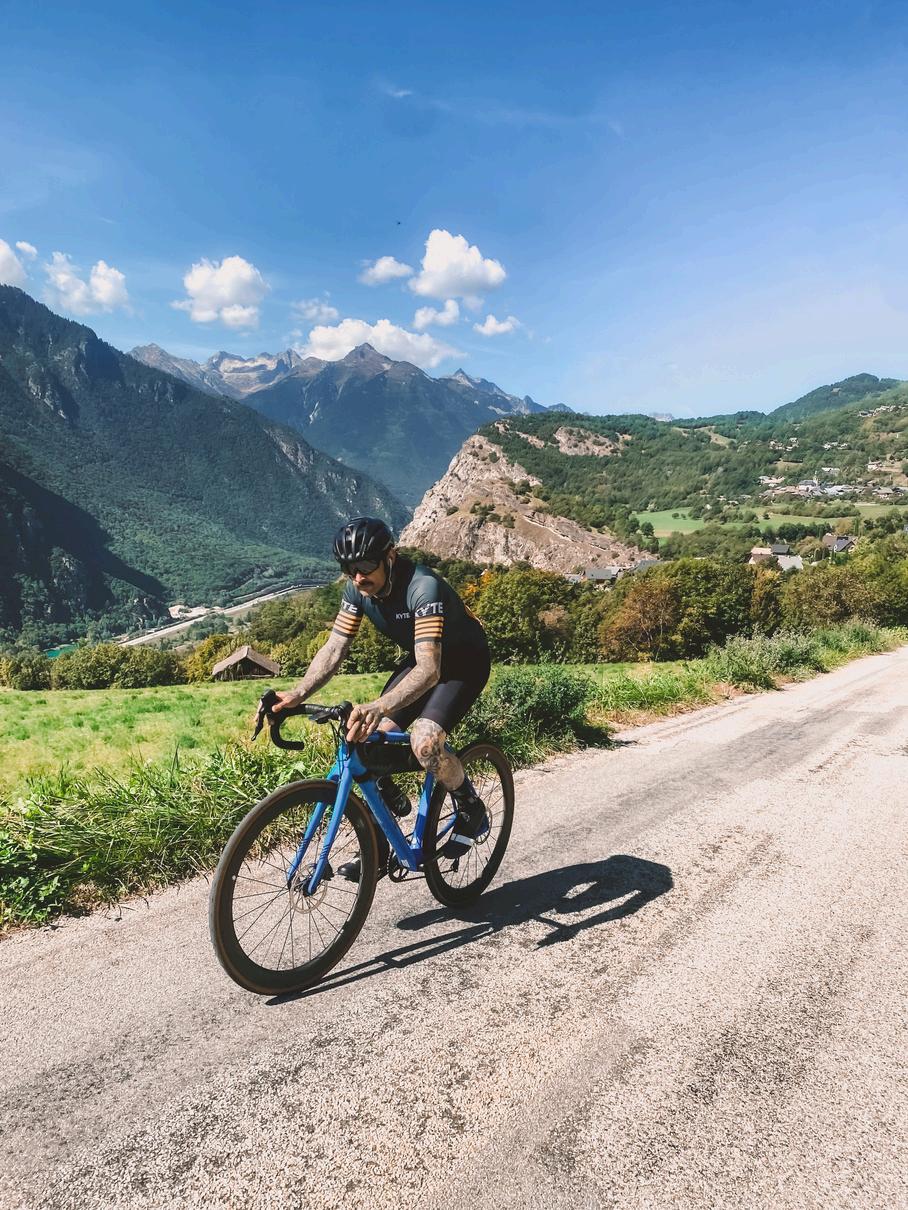

This zine wouldn’t be complete without acknowledging Grant, my cycling partner. Though we often rode apart, our journey always began with a quiet departure—just a simple ‘see you at the top.’ We set off with a trust that, despite our different paces, we would both reach the summit, each carrying our own truths along the way and distinct versions of the same journey. Even when he was out of sight, I felt the silence stitching us back together.
Perhaps it was never about the summit itself, but about the quiet intervals in between. It was in those silences between each pedal stroke and switchback that we began to understand the real weight of the journey.
Though those paths are now behind us, the roads we travelled remain not just in rock and tarmac, but in the trails we carved and the bonds forged through shared endurance. These moments, suspended in time, remind me that even when we are far from those places, our connection still remains.
col du galibier
col du télégraphe
col du mollard
col de la confrérie
col du chaussy
lacets de montvernier
col de la croix de fer
col du galdon
